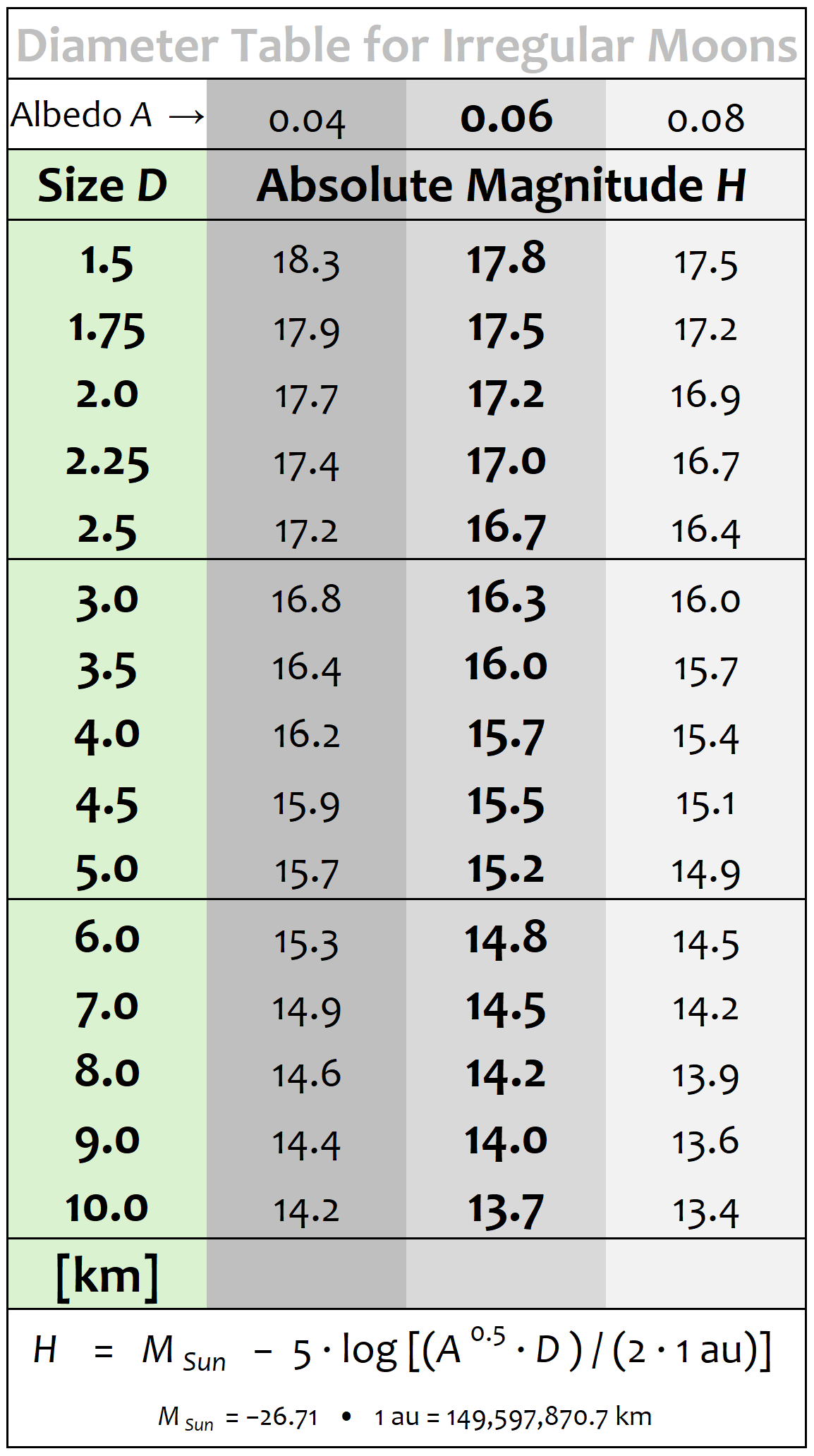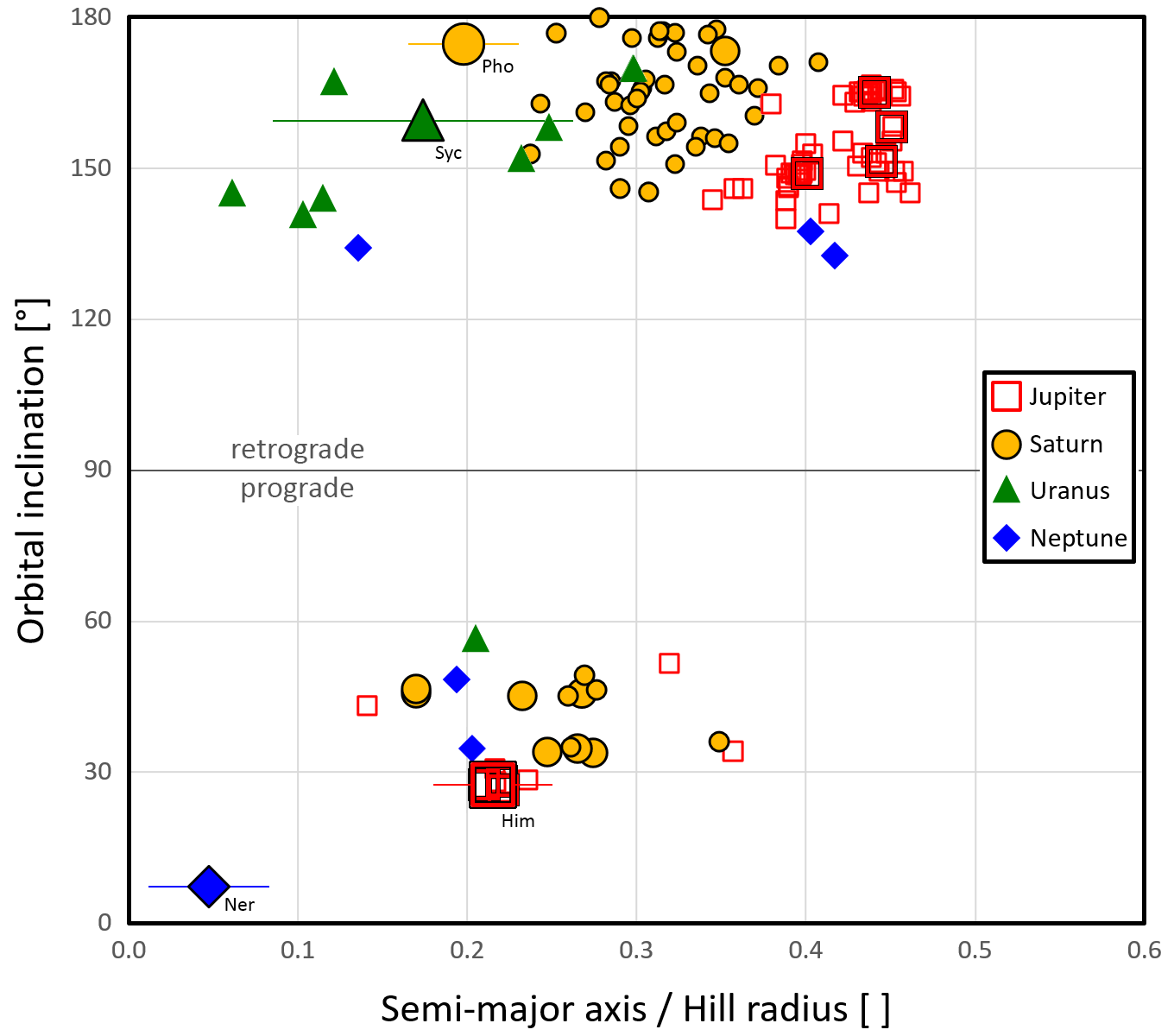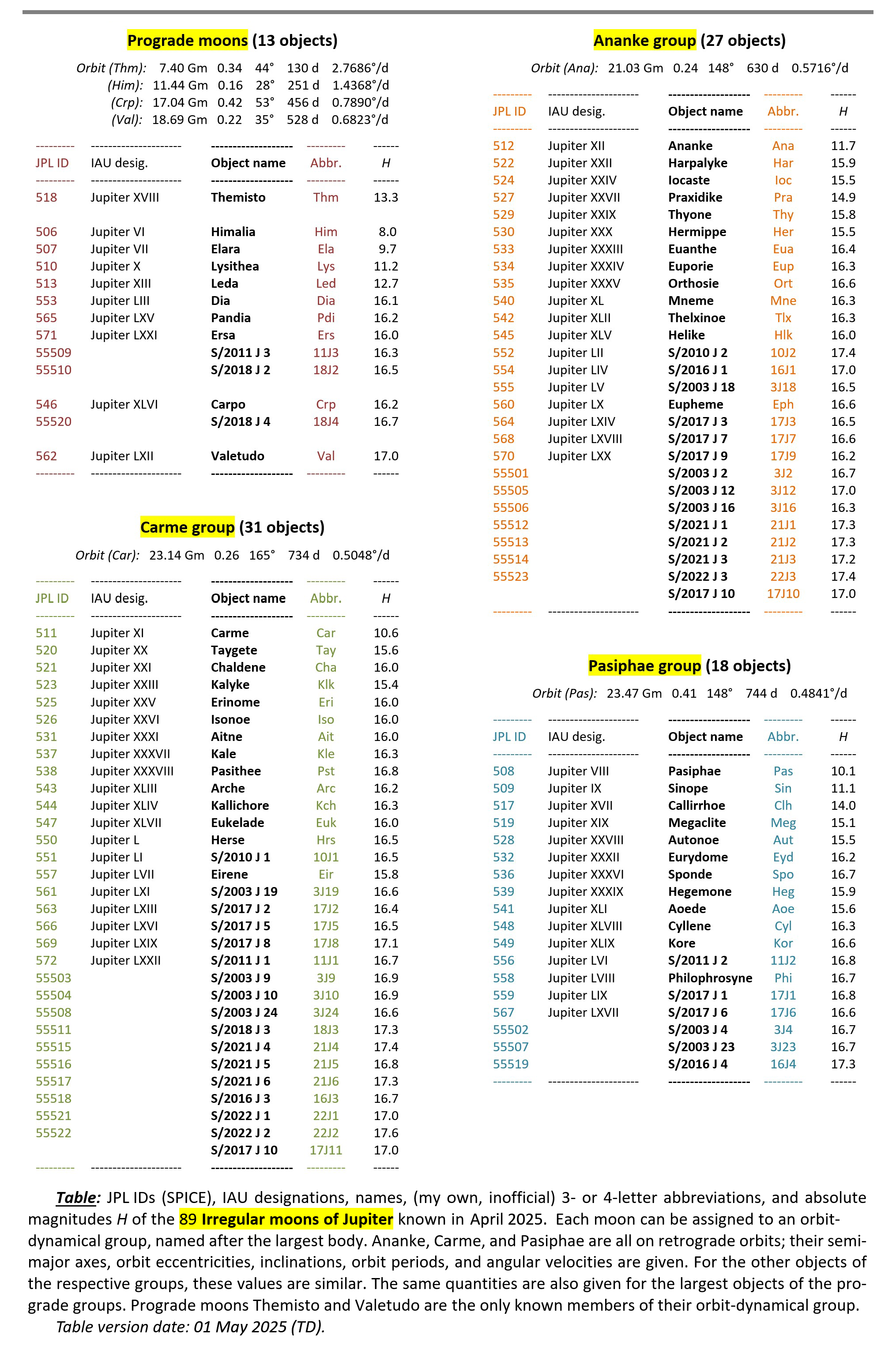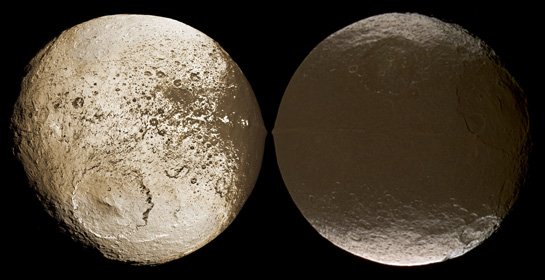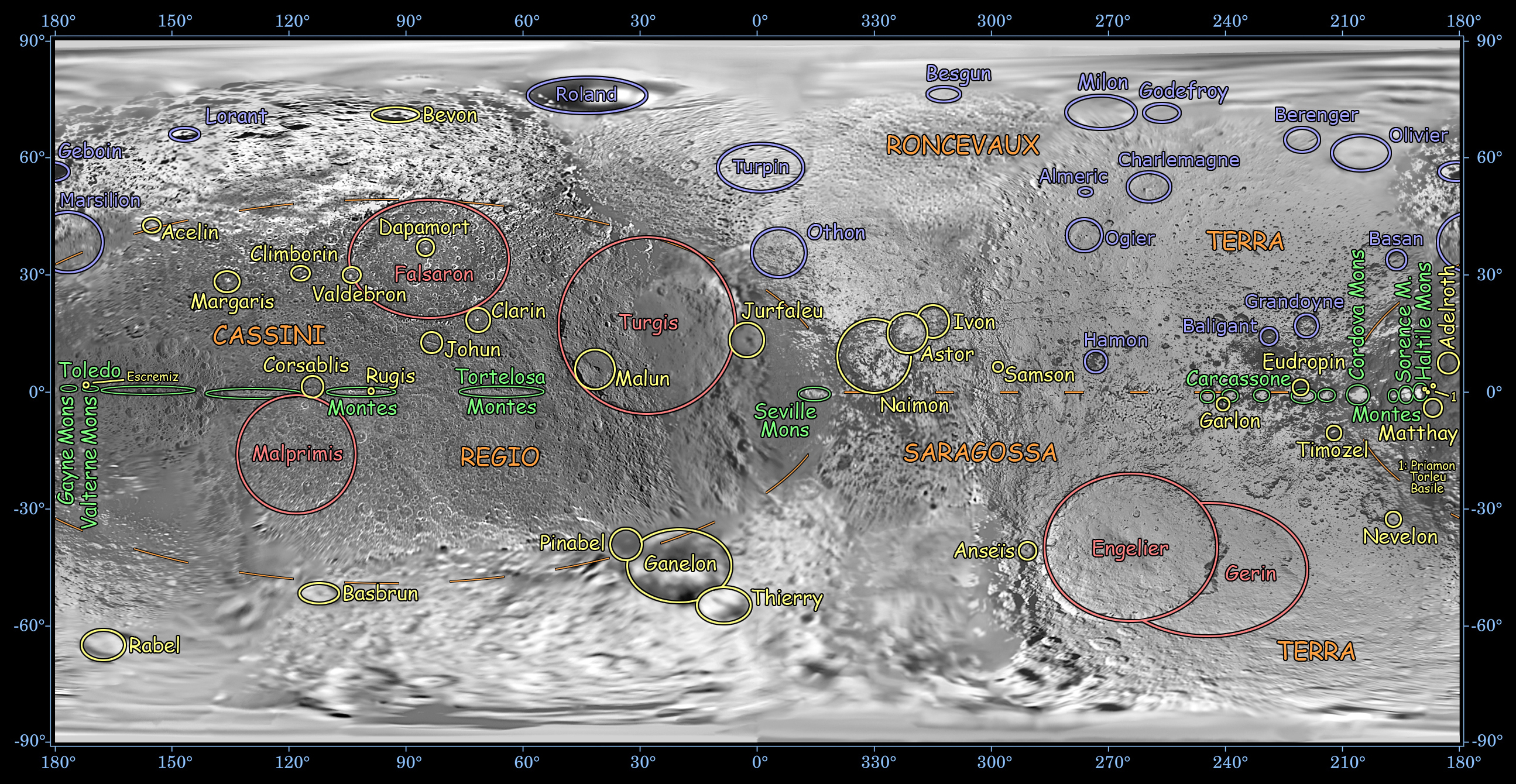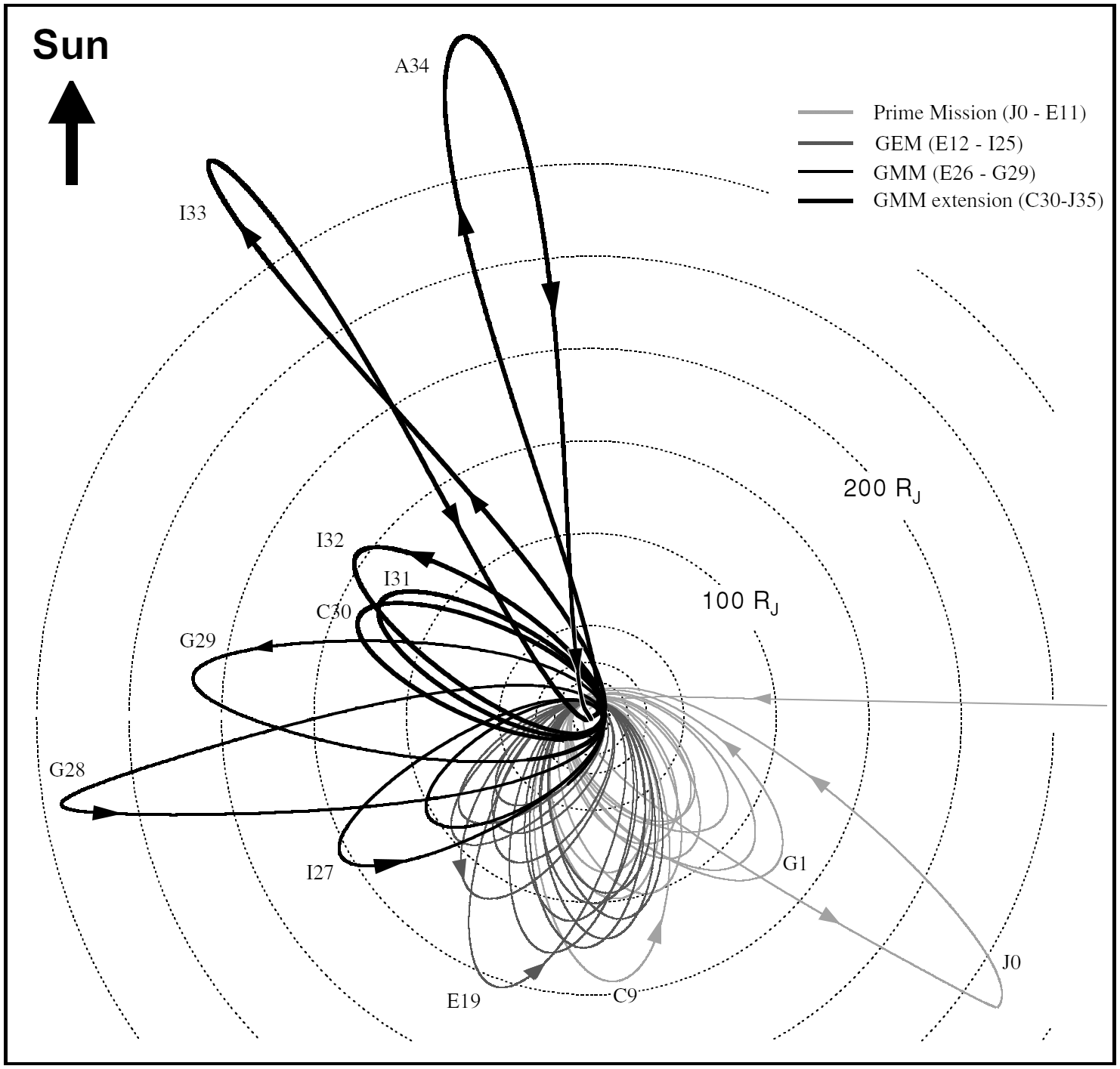| This page offers summarized information “to go” from my website’s topics for a quick availability on your smartphone in .jpg or .png format. Feel free to copy the files and store them on your phone. At bottom, there are YouTube links of two of my Cassini talks from 2017 — one in English, the other in German. |
Diese Seite bietet Informationen “zum Mitnehmen” im .jpg oder .png Format zu ausgewählten Themen meiner Webseite. Dafür darfst Du die Bilddateien gerne auf Dein Smartphone laden. Ganz unten auf der Seite befinden sich zudem YouTube-Links zu zwei meiner Vorträge über Cassini aus dem Jahr 2017 — einer auf deutsch, der andere auf englisch. |
■ Diameter Table for Irregular Moons ■ Irregular Moons in the Solar System: a,i Plot ■ Jupiter’s Irregular Moons ■ List of Saturn Moons Names ■ Table of 122 Irregular Moons of Saturn ■ a,e,i Plot of Saturn’s Irregular Moons ■ Iapetus Trailing and Leading Sides ■ Iapetus Surface Map ■ Galileo Jupiter Orbit Tour 1995–2003 (Petal Plot) ■ Public Talks — Öffentliche Vorträge ■
Last update: 25 May 2025
Diameter Table for Irregular Moons
(or other dark and small Solar-system bodies)
Table for a conversion between diameters (sizes) and absolute magnitudes H.
Albedos: 4%, 6%, 8% ■ Sizes: 1.5 to 10 km
Irregular Moons in the Solar System: a,i Plot
Plot of a,i space for the 144 Irregular moons known in 2021:
Jupiter 71 objects, Saturn 58, Uranus 9, Neptune 6.
For technical details, see → here.
Hill radii:
Jupiter
53.1·106 km = 0.355 au = 743 RJ
Saturn
65.5·106 km = 0.438 au = 1090 RS
Uranus
70.1·106 km = 0.469 au = 2740 RU
Neptune
116.1·106 km = 0.776 au = 4690 RN
Jupiter’s Irregular Moons
Table of names and absolute magnitudes H of 89 Irregular moons of Jupiter. The objects are ordered by orbit-dynamical group and by H. From H, object sizes can be estimated, see formula ‘D = …’ in note (7) or diameter table for Irregular moons on this page.
List of Saturn Moons Names
The names of the 83 moons of Saturn known in 2022, ordered by distance from the planet. Modified screenshot from a powerpoint viewgraph that I used in public talks. Feel free to memorize.😉
Table of 122 Irregular Moons of Saturn
Orbitals elements and physical properties of the 122 Irregular moons of Saturn announced until 2023.
(The 128 objects announced in 2025 will follow as soon as JPL will have published their mean orbital elements.)
a,e,i Plot of Saturn’s Irregular Moons
Polar plot of the a,i (semi-major axis, inclination) space for the 38 Irregular moons of Saturn known at the end of the Cassini mission in 2017, adapted from Fig. 1 on page 412 in Denk et al. (2018). The thin bars are proxies for the eccentricities e, by showing periapsis and apoapsis distances of each object.
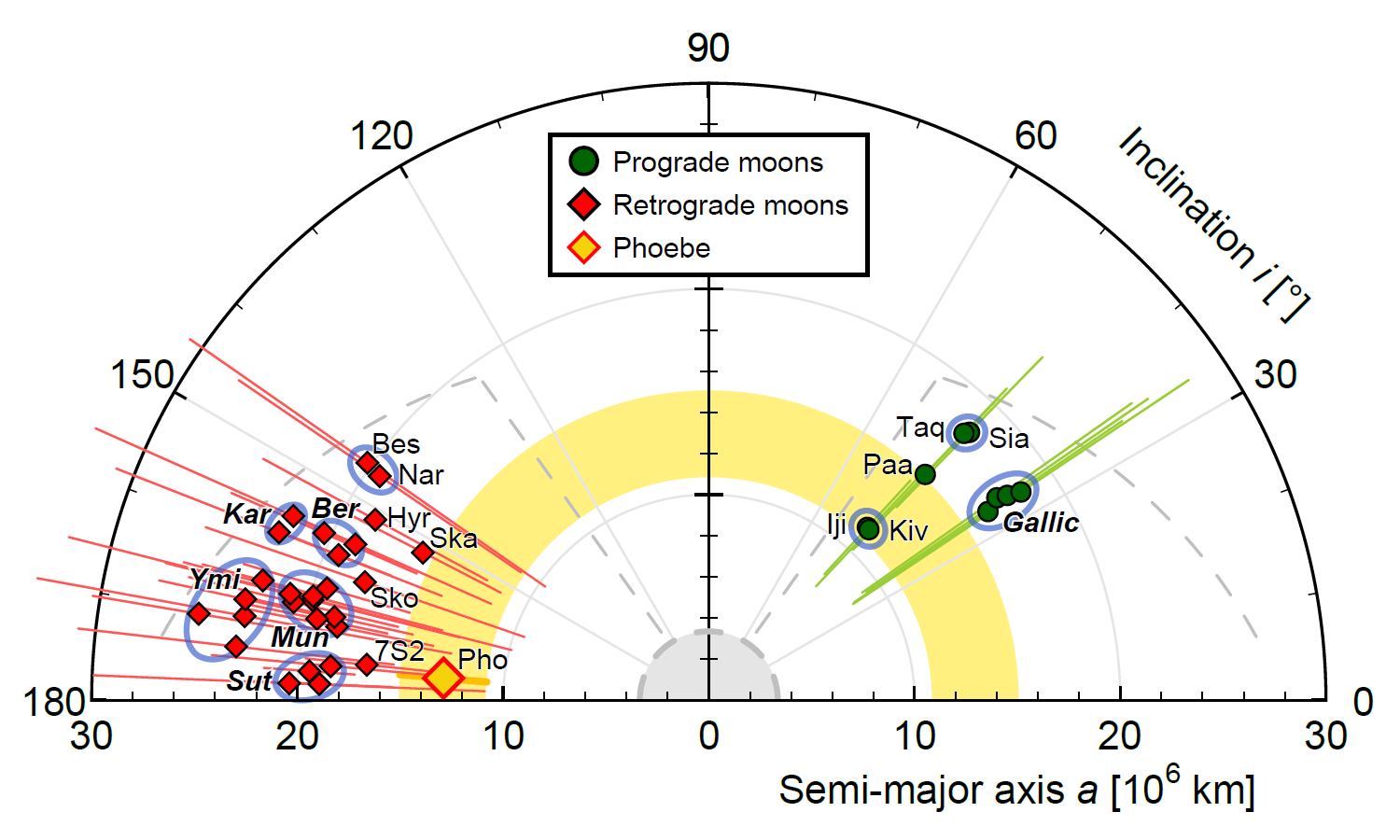
Updated: 31 Jan 2018
Iapetus Trailing and Leading Sides
Between 2004 and 2017, the Cassini spacecraft made multiple observations of Saturn’s peculiar moon Iapetus, including a very close (“targeted”) flyby in Sep 2007 and another relatively close flyby at New-year’s Eve 2004. Iapetus is famous for its extreme brightness dichotomy with the leading side (right) being ∼10x darker as the trailing side (left) and polar regions.
Iapetus Surface Map
After the Cassini spacecraft‘s “targeted” flyby in Sep 2007, a map of Iapetus has been compiled. I created the version shown here for a good overview of the names of the large basins (in red), craters (yellow and blue), mountains (green), and regiones (orange). The area with the craters labelled in blue color has already been imaged by the Voyager-2 spacecraft in Aug 1981.
Galileo Jupiter Orbit Tour 1995–2003 (Petal Plot)
The Galileo spacecraft was orbiting Jupiter 35 times from 07 Dec 1995 until 21 Sep 2003. The petal plot shows the orbit in a Sun-Jupiter fixed frame. Orbit inclinations were near zero all the time.
Public Talks — Öffentliche Vorträge
![]() An overview of the public talks I gave between November 2016 and December 2017 about the Cassini mission and the Cassini Grand Finale can be found here. The talks in Göttingen and Heidelberg have been recorded; see below for the links.
An overview of the public talks I gave between November 2016 and December 2017 about the Cassini mission and the Cassini Grand Finale can be found here. The talks in Göttingen and Heidelberg have been recorded; see below for the links.
![]() Eine Übersicht über meine öffentlichen Vorträge, die ich zwischen November 2016 und Dezember 2017 über die Cassini-Mission und das Cassini Grand Finale gehalten habe, finden Sie hier. Die Vorträge in Göttingen und Heidelberg wurden aufgezeichnet. Hier die Links:
Eine Übersicht über meine öffentlichen Vorträge, die ich zwischen November 2016 und Dezember 2017 über die Cassini-Mission und das Cassini Grand Finale gehalten habe, finden Sie hier. Die Vorträge in Göttingen und Heidelberg wurden aufgezeichnet. Hier die Links:
![]() Göttingen: Abendvortrag, 21 Nov 2017, Teil 1 (41:24 min)
Göttingen: Abendvortrag, 21 Nov 2017, Teil 1 (41:24 min)
![]() Göttingen: Abendvortrag, 21 Nov 2017, Teil 2 (40:58 min)
Göttingen: Abendvortrag, 21 Nov 2017, Teil 2 (40:58 min)
![]() Heidelberg: Colloquium talk, 19 Dec 2017 (93:35 min)
Heidelberg: Colloquium talk, 19 Dec 2017 (93:35 min)
© Tilmann Denk (2025)
